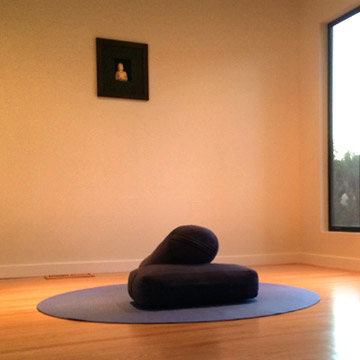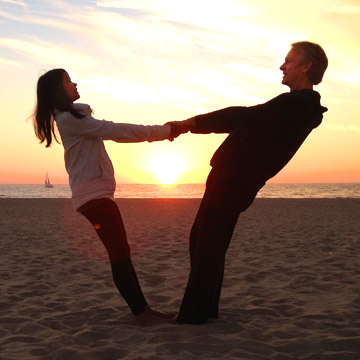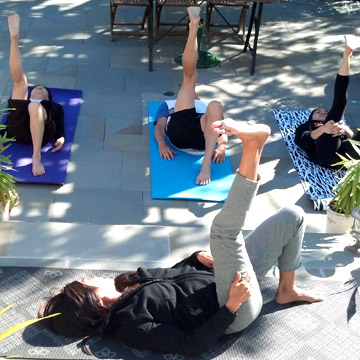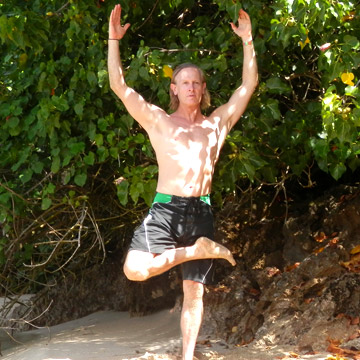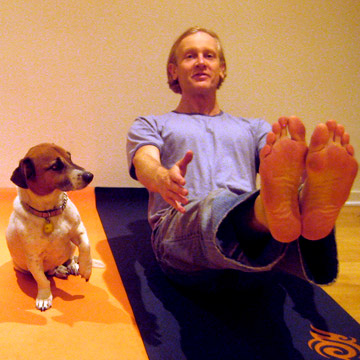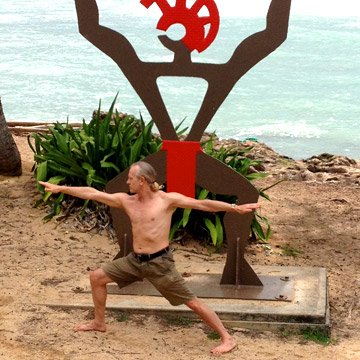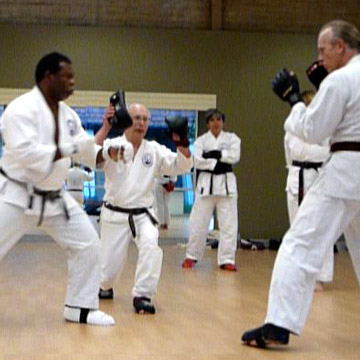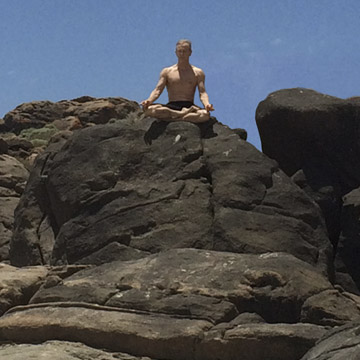The Boundary
You may have heard this in yoga class — the Sanskrit word "Yoga" translates to union or yoke. In Yoga Nidra we expand upon union, defining Yoga as embodying our sense of non-separation, where everything that we see, feel and experience we realize is actually an aspect of ourselves. "Nidra" is a word that means "sleep" in Sanskrit, but when it's coupled with the word "Yoga" as in "Yoga Nidra," it actually means to know yourself as being non-separate, whatever state you're in.
It's quite possible that all this leaves you cold - that it fails to chime in anyway with your own inner experience. If that's the case there's one more angle from which it can be demonstrated that the self and sense of non-separateness is not all that it seems.
Let's take a straightforward question, "What do you take to be the boundary of yourself?" The place where you end and with the rest of the world that isn't you begins? For most of us the answer is that we think of ourselves as packages of skin - the envelope of skin enclosing the physical body defines the boundary of ourselves.
Suppose you were to zoom in using an ultra-powerful microscope on a part of your left hand until all that you were looking at was a tiny region of your index finger and a tiny part of the air surrounding it. Given sufficient magnification what you would see through the microscope would be nothing but a cacophony of molecules some making up your finger and some making up the adjacent air.
So let's rephrase the question what exactly is your rationale for drawing a boundary between some of these molecules and others so as to define some of them as you, and some of them as the world outside you? At this high magnification it's apparent that all we're talking about are molecules. What makes some of them so special as to count as you?
One obvious answer that springs to mind has to do with conscious control. you seem to be able to choose to move your index finger for example in a way that simply doesn't apply to things outside your skin perhaps this is why the skin boundary is so important. On one side of it you have conscious control on the other side of it you don't.
But do you really exert conscious control? What about your breathing? Do you actively and consciously pump the blood through your veins or dispatch antibodies to fight viral infections? You don't - those things just happen. Even thinking itself isn't as voluntary as we might imagine most of the time thinking just seems to happen.
Most believe that you can control everything within your skin and nothing outside, except of course that's not true. You exert control over plenty of things that are outside of your skin; using your powers of persuasion you might persuade hundreds of thousands of people to dispose a narcissistic dictator, for example.
That's an indirect form of control moving your limbs for example feels more direct. The distinction between "direct control" and "indirect control" is defined by nothing more than where you draw the boundary between yourself and the rest of the world.
Conventionally, we think of the boundary as having two sides. A boundary is something that keeps two things apart but it actually makes more sense to describe it as a place at which two places meet or more accurately the place at which they are exactly the same thing. The inside of the boundary lines relies for its very existence on the outside and vice versa, they are inextricably by definition part of the same whole. You simply can't have the peak of the wave without the trough or darkness without light.
This is the insight behind the ancient Chinese symbol of Yin and Yang. There's nothing religious or even especially spiritual about it. It is merely the conclusion. There cannot be a you without an "everything else" and attempting to think about wanting isolation from the other makes no sense, nor is this some vague, insipid flowers and incense observation about how we are all one. It holds true on every level from the most abstract to the most concrete.
By John Johnson, (C-IAYT)

